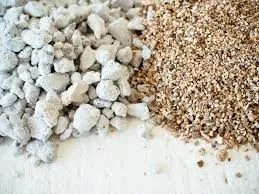Dec . 26, 2024 06:31 Back to list
high quality boiler refractory material
Understanding High-Quality Boiler Refractory Materials
In the industrial sector, efficiency and safety are paramount, particularly when it comes to high-temperature processes. One critical component in ensuring these factors are maintained is the use of high-quality boiler refractory materials. Refractories play a crucial role in thermal insulation, protecting boiler components from extreme heat and preventing the loss of energy in thermal systems. Understanding the properties, types, and importance of these materials can enhance operational effectiveness and extend the lifespan of boilers.
What Are Refractory Materials?
Refractory materials are substances that can withstand high temperatures without losing their shape or integrity. In the context of boilers, these materials line the furnace, flue, or other areas exposed to intense heat, ensuring that heat is retained within the system and structural components are protected. The primary function of boiler refractories is to insulate, but they also act as barriers against chemical corrosion and wear from particulate matter.
Key Properties of High-Quality Refractory Materials
1. High Temperature Resistance A crucial property of refractories is their ability to endure extreme temperatures, often exceeding 1100°C (2012°F). High-quality refractories are designed to maintain their structural integrity at such temperatures, preventing deformation, cracking, or melting.
2. Thermal Shock Resistance Rapid changes in temperature can cause materials to expand and contract, leading to thermal shock. Quality refractory materials are engineered to withstand these fluctuations without significant damage.
3. Chemical Resistance Boilers often handle corrosive substances, so refractory materials must be resilient against various chemicals and reactions. This resistance helps prolong the life of both the refractory lining and the boiler itself.
4. Low Thermal Conductivity High-quality refractories have low thermal conductivity, which effectively minimizes heat loss. This property not only enhances energy efficiency but also aids in maintaining stable temperature profiles within the boiler.
5. Mechanical Strength Strong refractories can support the weight of the boiler components without crumbling or breaking down, ensuring the long-term reliability and safety of the system.
Types of Refractory Materials
high quality boiler refractory material

There are various types of refractory materials, each suitable for different applications within a boiler system. Common categories include
- Clay-Based Refractories These are made from natural clays and are commonly used for their excellent thermal properties and affordability.
- High-Alumina Refractories With a higher alumina content, these refractories offer superior strength and temperature resistance, making them ideal for high-heat applications.
- Silica Refractories Known for excellent resistance to thermal shock, silica refractories are used in areas where temperature variations are common.
- Magnesia Refractories Suitable for environments with basic (alkaline) conditions, magnesia refractories are resistant to slag attacks, making them popular in steelmaking applications.
- Specialty Refractories These include materials designed for specific applications, such as insulating refractories that minimize heat loss or dense refractories that resist thermal wear.
Importance of Selecting High-Quality Refractories
The selection of high-quality refractory materials is critical for both performance and safety. Poor-quality refractories can lead to frequent breakdowns, increased maintenance costs, unsafe operating conditions, and energy inefficiencies. Conversely, investing in superior refractory materials enhances reliability, improves efficiency, and reduces the overall operational costs of boiler systems.
Conclusion
In conclusion, high-quality boiler refractory materials are indispensable in industrial applications, offering the necessary resistance to high temperatures and corrosive conditions. Understanding their properties and types aids in making informed decisions regarding boiler maintenance and operation. By prioritizing the selection of high-quality refractories, industries can ensure not only the longevity and safety of their equipment but also enhance energy efficiency and performance, contributing to sustainable industrial practices. Whether in a power plant or a manufacturing facility, the role of refractory materials cannot be overstated, and investing in the right materials is key to long-term success.
-
Eco-Friendly Granule Covering Agent | Dust & Caking Control
NewsAug.06,2025
-
Fe-C Composite Pellets for BOF: High-Efficiency & Cost-Saving
NewsAug.05,2025
-
Premium Tundish Covering Agents Exporters | High Purity
NewsAug.04,2025
-
Fe-C Composite Pellets for BOF | Efficient & Economical
NewsAug.03,2025
-
Top Tundish Covering Agent Exporters | Premium Quality Solutions
NewsAug.02,2025
-
First Bauxite Exporters | AI-Optimized Supply
NewsAug.01,2025
